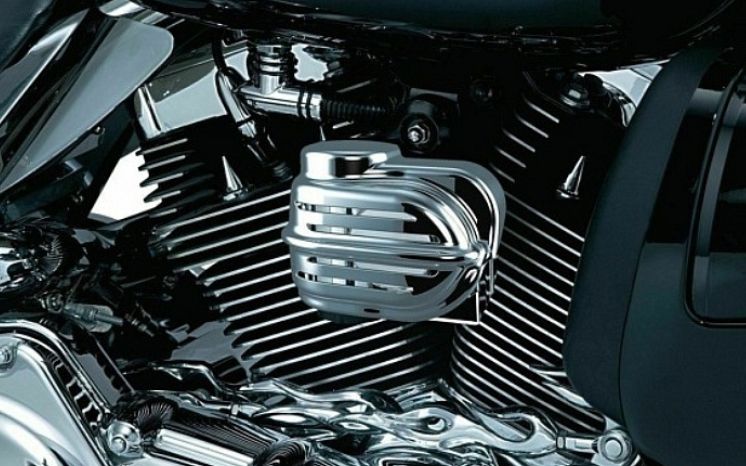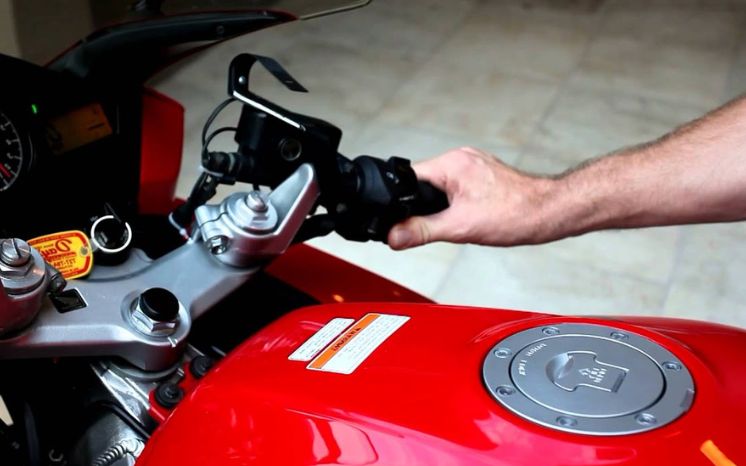Motorcycles, like other vehicles, come equipped with a range of features to ensure rider safety and adherence to roadway rules. One question that often crops up among novice riders and curious onlookers is, “Do motorcycles have horns?”
This query may seem simple yet it opens up a broader conversation about motorcycle design, rider safety, and road regulations. Engaging in this discussion not only helps to clear up confusion, but also emphasizes the importance of understanding the features and functions of one’s vehicle. In our exploration of this topic, the focal point will be: “Do motorcycles have horns?”
Do Motorcycles Have Horns?
Yes, motorcycles do have horns. While some may assume that due to their smaller size and sleek design, motorcycles may not require a horn like other larger vehicles. However, this is not the case.
Most motorcycles are equipped with a horn, just like any other motor vehicle on the road. The horn is an essential safety feature that allows riders to alert others of their presence, warn of potential danger, or communicate with other drivers in emergency situations. It is especially crucial for motorcycles as they are often smaller and can easily go unnoticed by larger vehicles.
In addition to being a safety feature, horns on motorcycles also serve the purpose of adhering to road regulations. In many countries, it is mandatory for all motor vehicles to have a functioning horn. Failure to have a working horn can lead to penalties and fines. Therefore, it is essential for riders to ensure their horns are in proper working condition before hitting the road.
It’s important to note that while motorcycles do have horns, they may not be as loud or powerful as those on larger vehicles. This is due to the limited space and weight restrictions on motorcycles, making it challenging to fit a large, powerful horn. However, modern motorcycle manufacturers are continually improving their designs to incorporate more effective horns that meet both safety standards and rider preferences.
In conclusion, motorcycles do have horns and they play a crucial role in ensuring rider safety and adherence to road regulations. So the next time someone asks you, “Do motorcycles have horns?”, you can confidently say yes and educate them on the importance of this often overlooked feature.
Troubleshooting Your Motorcycle Horn

Now that we have established that motorcycles do indeed have horns, it’s important to know how to troubleshoot any issues that may arise with this feature. Like any mechanical part, motorcycle horns can malfunction or stop working altogether.
If you find that your horn is not functioning properly, the first thing to check is the wiring and connections. Loose or corroded connections can cause a horn to stop working. Make sure all connections are tight and clean.
If the wiring and connections seem to be in order, the next step is to check the fuse. Like other electrical components on a motorcycle, horns have a designated fuse that can blow out due to an overload or short circuit. If the fuse is blown, replace it with a new one of the same rating.
If the wiring, connections, and fuse all seem to be in good condition, then it’s possible that the horn itself is faulty. In this case, it may need to be replaced entirely.
Regular maintenance and inspection of your motorcycle’s horn can help prevent any issues from arising. It’s also essential to test your horn periodically to ensure it is working correctly.
See more: Best Motorcycle Bluetooth Headset
FAQs
As motorcycles and their components can be a complex area to navigate, many riders have questions regarding the different features and functionalities of these vehicles. Here, we aim to address some of these queries, delving deeper into the subject with a focus on motorcycle horns and their maintenance.
What is the standard decibel range for motorcycle horns?
The decibel range for motorcycle horns varies depending upon the make and model of the motorcycle, as well as the country’s regulatory standards. Generally, motorcycle horns range from 100 to 115 decibels. The critical factor is that the horn should be audible to other motorists and pedestrians to serve its purpose of alerting and warning.
Are there any regulations around the use of horns on motorcycles?
Yes, there are regulations around the use of horns on motorcycles. These rules vary from country to country. In many places, it’s prohibited to use horns in residential areas or during certain night hours unless it’s a case of imminent danger. Additionally, the use of excessively loud horns that exceed regulatory decibel limits can be subject to fines and penalties.
Can I upgrade my motorcycle horn to a louder one?
Yes, you can upgrade your motorcycle horn to a louder one. However, it is essential to ensure that the upgraded horn complies with your local regulations regarding noise levels. It’s also critical to get professional help for such an upgrade because incorrect installation can lead to issues like excessive power drain or even a short circuit in your motorcycle’s electrical system.
How often should I check my motorcycle horn for proper functioning?
While there is no fixed frequency for checking your motorcycle horn, it is a good practice to test it periodically, especially before long rides. For an everyday rider, checking the horn once a week can be a good habit. Remember, a functioning horn is not just a compliance with regulations, but an essential tool for your safety on the road.
Final Thoughts
Motorcycles, like any other vehicle, come with their own set of complexities and features one must understand for a safe and legal riding experience. One such feature is the horn, which, while small, plays a critical role in road safety and compliance with traffic regulations.
Understanding the importance of the motorcycle horn goes beyond just knowing its existence. The horn serves as a tool for communication and alert in traffic, reducing risks of collision and promoting safety. Therefore, ensuring its proper functionality is paramount.
Moreover, being aware of the local regulations regarding the decibel level and appropriate use of motorcycle horns is essential. While upgrades to your motorcycle’s horn are possible, they should be done in compliance with local noise standards to avoid legal complications.
In conclusion, the question, “Do motorcycles have horns?” should be a gateway for riders to delve deeper into their understanding of their vehicle’s features, maintenance, and the regulations surrounding them. As riders, our responsibility extends beyond just riding; we need to ensure that our journey is safe, not just for us but for others on the road as well.
